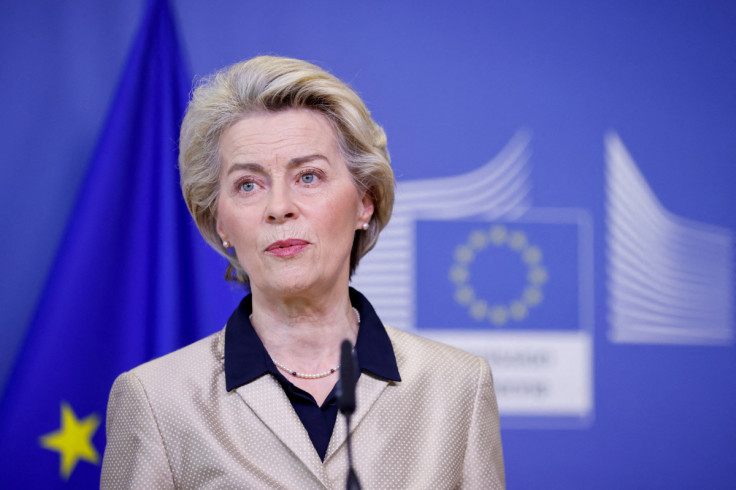European Commission and European Investment Bank input €18bn into Global Gateway strategy
Addressing the financial demands presented to the international community by climate change, the EU has announced new investments as part of its Global Gateway Strategy.

The persistence of the global climate investment gap begs the question of who should pay the financial costs of transitioning to a greener more sustainable global economy.
In October 2022, Ani Dasgupta, head of the World Resources Institute, said that the "'climate investment gap' hampers the goals and ambition of the Paris Agreement." The Paris Agreement was set out in 2015, establishing commitments amongst nation-states to limit the rise in global temperatures to two degrees Celsius this century, with agreement on further action to limit the rise to 1.5 degrees.
More specifically, according to a report by the Climate Policy Initiative, to meet internationally agreed climate objectives by 2030, a minimum 590 per cent increase in annual climate finance is necessary. Without this increase, countries around the world may fail to avoid "the most dangerous impacts of climate change".
For developing countries the financial mountain presented by climate change is big. According to the 2021 UNEP Adaptation Gap Report, annual adaption costs for developing countries could amount to between $155 billion to $330 billion by 2030. Furthermore, according to the 2022 UNEP Adaptation Gap Report, developing countries face an "adaption finance gap" which is "likely five to 10 times" higher compared to "current international adaptation finance flows."
So who should take responsibility for plugging the climate investment gap? Should developed countries invest in the developing world? Taking some responsibility for the need for increased climate finance, the EU Commission (EC) and the EIB have committed €18 billion of investment to EU partner countries as part of the Global Gateway strategy.
According to the President of the EC, Ursula von der Leyen, the €18 billion investment will spark the implementation of Global Gateway projects which "advance the climate transition around the world." This investment follows the €31 billion the EIB has already mobilised under the Global Gateway strategy.
She also highlighted that Europe is the greatest source of global climate finance. In 2022, EU member states accounted for 43 per cent of global Official Development Assistance.
Previously, the EU has increased investments in Kenya, with the EIB pledging $200 million for the Trade and Development Bank which is managed by multiple African states. Also on the Global Gateway agenda was the decision to support the building of a giant hydropower plant in Tajikistan last year.
The Global Gateway strategy
The EU's Global Gateway strategy aims to confront global challenges such as climate change, health provision, and security in global supply chains. Von de Leyen describes it as "a template for how Europe can build more resilient connections with the world." The scope of the strategy includes the digital, energy, and transport sectors, as well as health, education, and research.
Its stated purpose is to decrease the "global investment gap", allowing EU partner countries to make the investments they need into a sustainable economic future.
Between 2021 and 2027, the institutions of the EU and the EU27 will "mobilise" investments worth up to €300 billion to address the needs of partner countries, fostering "sustainable and high-quality projects". The idea is intended not just to benefit the economies and communities of partner nation-states, but also to create mutual gains for the EU27 through opportunities for trade and investment.
The initiative could be interpreted through a liberal worldview, with the core objective being to foster joint economic gains amongst European nation-states and their partners.
However, it can also be seen as the EU's answer to China's Belt and Road Initiative. This implies a geopolitical and geoeconomic motivation, one that is motivated by the overarching balance of power within the global international system.
Launched in 2013, the Belt and Road Initiative is an infrastructure development strategy intended to boast China's economic power and influence.
The EC addresses the question of whether Global Gateway is "a response to the Chinese Belt and Road initiative" indirectly, stating that the strategy offers an "innovative choice for global infrastructure development," with the initiative motivated by the need to defend European interests and strengthen the "rules-based world".
The EC also associate Global Gateway with democratic values, which they say can ensure "certainty and transparency for investors". The democratic values of Europe clearly contrast with China's authoritarian political system.
Furthermore, the Global Gateway intends to "limit the risk of debt distress" to partners. Whilst it does not say it explicitly, this could be a reference to the idea that the Chinese Belt and Road initiative is a debt trap for developing countries.
© Copyright IBTimes 2025. All rights reserved.




















